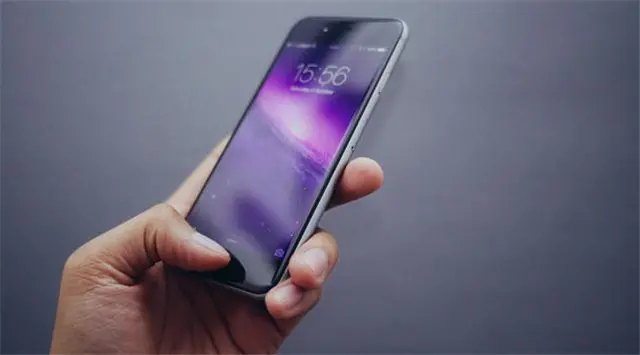Apple Inc.'s latest iPhone hit stores across Japan Thursday but far from the throngs of crowds lining up outside stores like Apple's flagship store in Tokyo's upscale Ginza district and large Apple and mobile retailers in shopping hubs like Shibuya, Harajuku and Shinjuku, the response compared to previous launches has been somewhat muted.
The lower priced iPhone SE, which Apple claims to be the most powerful 4-inch phone ever and boasts the same A9 chip as is used in the acclaimed iPhone 6s, as well as a 12-megapixel camera that can keep Japan's legions of "selfie snappers" happy along with the option to capture precious moments on 4K video, Apple reverting to a smaller display has some consumers miffed.
"Granted, a 4-inch Retina display would make for a very vibrant and sharp viewing experience as we've come to expect from Apple's MacBooks, Airs and Pros (laptops), but the global standard, which in many ways was set by Apple's switch to a larger smartphone screens, including with the iPhone 6 and 6 Plus, has oddly been changed by Apple,"self-professed"techie," Daiki Kotaki and former member of Apple's "Genius Bar" team, told Xinhua.
Kotaki added that the new phone's GPU performance being three times faster than that of the iPhone 5s was also noteworthy and that, generally speaking, all the power and technical advancements available in the relatively new iPhone 6s had been housed in the smaller SE, but the most valid point he made is the one that seems to see the buzz around Apple's new iPhone release notably muted in Japan.
"It's a reworked iPhone 5s and isn't 'trying' to look any different. It has the same boxy shape, when Apple aficionados expects innovation and brand new stylings with each new iPhone. If Apple were to release a cheaper iPhone 6c, that maintained the same larger screen, but with less power and overall functionality, that would make sense, as that has always been Apple's remit up until now,"the insider said.
"This is something of a surprise regression and the release today hasn't exactly stunned markets and consumers here in the know are already holding off for the release of the iPhone 7, which is expected to build on the latest technologies from the iPhone 6s, but is rumored to have an edge-to-edge concave screen, which is the type of design aesthetic that will see Japanese smartphone fads queuing up for days outside stores to get their hands on one," Kotaki said.
There does seem to be some logic behind the new release of the new-old iPhone in Japan, however, as Apple attempts to baptize more entry-level smartphone users into its technological cult, while the top three mobile operators who carry the ubiquitous phone are hoping to capitalize from largely standard two-year contracts, which while making the purchase of the phone hardware itself appear very cheap, is actually bundled into the monthly costs over the period of the contract.
In addition what Apple loses, or doesn't make in hardware sales, it's gearing up to more than cover in app sales through its store.
The iPhone SE handset is supposed to have a price tag of around 52,800 yen (469 U.S. dollars), which is, by comparison 40,000 yen less than current iPhone models, but all smartphones see this price subsidized, or paid off in installments for mobile users residing in Japan; and family and student plans available here also offset the initial cost of the famously pricey handsets.
The government here is also struggling and in fact has no authority to regulate the mobile operators' autonomous plan options and prices, although is grappling to standardize guidelines, with an announcement to this affect possibly being made by the Communications Ministry as early as Friday, sources close to the matter have said.
In terms of the new iPhone SE, they can be picked up for as little as 432 yen from mobile operator SoftBank, with major rival NTT Docomo, although trying at first to offload the entry-level smartphone for free, set a price tag in some of its plans at 648 yen, following staunch criticism for the ministry. KDDI, for its part, has said it will sell the phone for 720 yen.
The proviso is however, that two-year contracts are signed by new users who are upgrading from regular cellphones, in a rather transparent drive by Apple and its mobile carriers here to try and kill off the non-smartphone industry and ensure that the consumes squeezed into making the switch to Apple products will be able to do so affordably, at least initially.
Research firm IDC Japan has projected that domestic smartphone shipments will tumble 4.7 percent in 2016, due to Apple's emphasis on mere economics and capturing new market share and not introducing cutting-edge innovation and new "wow" factors, but the maker and its carriers are counting on app sales and other in-line services to offset slumping sales.
"My former colleagues tell me that pre-orders for the SE haven' t been that bad, but have been no way near close to orders ahead of previous iPhone launches, all of which have created hysteria, as will the iPhone 7, when it's released, I guarantee," Kotaki explained, adding that overseas aficionados should hold off on flying in to Tokyo to snap up a phone until the release of the next generation of iPhone, in terms of price-performance-innovation and aesthetic value.
 简体中文
简体中文

